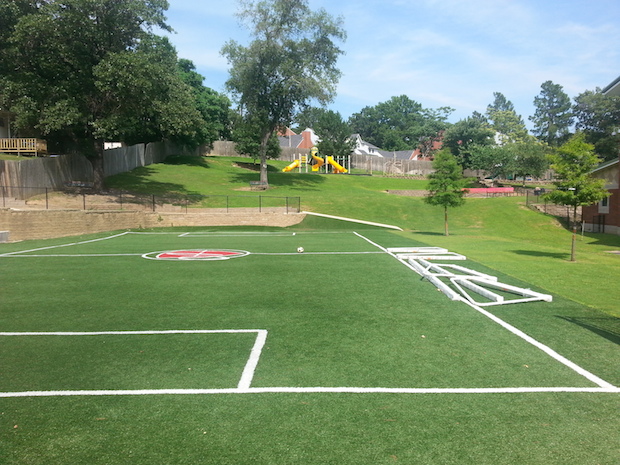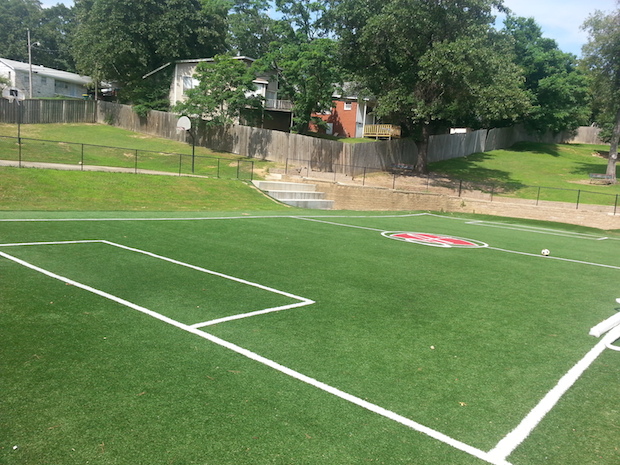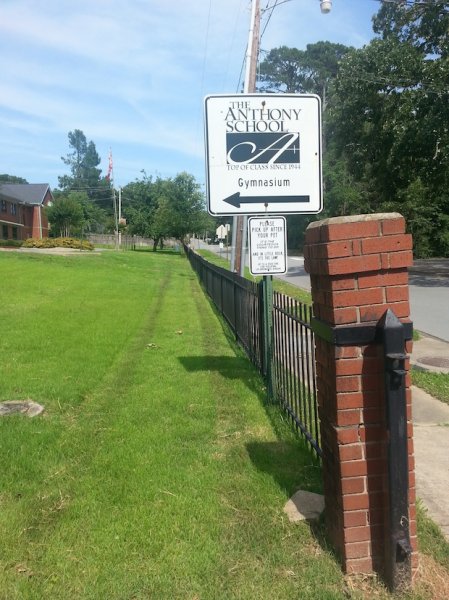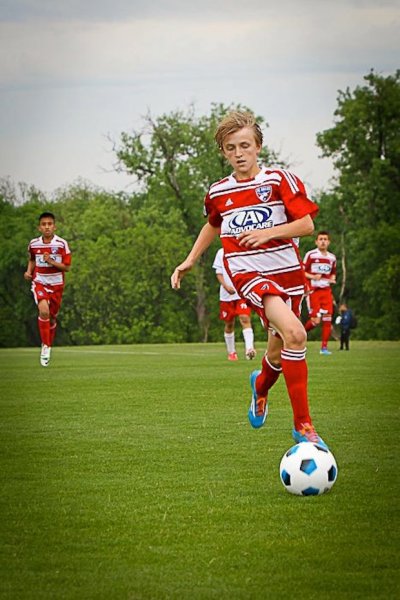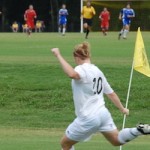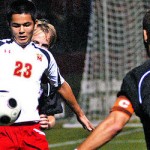These ultimately are the things that move billions to watch the world’s largest sporting event, and they are the gifts which its champions invariably possess. Messi, Ronaldo, Neymar and others are the kind of game-changing and at times terrifying talents which collect golden cups and hundreds of millions of fans worldwide.
The U.S. does not – and never has – had a talent of this caliber. Until seven years ago, many experts believe it did not even have a training system capable of producing such a star. But there are signs the tide is beginning to change, and that the U.S. will in coming World Cups field a legit contender with the same kind of spectacular skill we expect to see in teams like Brazil, Argentina and Germany. No matter how the U.S. performs in the coming weeks in a “Group of Death” featuring games against Ghana (tonight), Germany and Portugal, its future appears to be brighter than it’s ever been.
Proof is evident not only in soccer-mad cities like Seattle, Tampa and San Jose, but in the playground of a small, private school in Little Rock.
* * *
Thomas Roberts may already be the most accomplished 13-year-old soccer player in Arkansas history. In four months, the rising eighth-grader will almost certainly be the first to try out for a European club academy that has produced more elite soccer players than any other in the world. He’s been training against teens three years older in the Arkansas Rush program “and could still be considered the best player on both teams,” says Rush technical director Nathan Hunt.
A year and a half ago, Roberts started training in the youngest age level of the FC Dallas youth development system. He has emerged as one of the best players on one of the nation’s best teams in his age group. “He’s a very special player,” says Chris Hayden, Vice President of FC Dallas Youth. “Highly gifted technically and very savvy.” Hayden plans to recommend Roberts to join a pool of players who by late fall will try out for the U-14 U.S. National team.
While Roberts ascends to heights no Arkansans have touched before, the Little Rock native is also playing a part in a major upheaval in the way future American national teams are being trained. His FC Dallas academy began seven years as part of the U.S. Soccer Development Academy, a project funded by the game’s national governing body that attempts to emulate the multi-team, age-divided structure of the top European clubs. The change has streamlined and accelerated the progress of the country’s brightest young talents. “Before 2007, [US Soccer] was categorized as a free-for-all—we lacked focus, and everybody’s goals and agendas were so varied and different,” Tony Lepore, director of scouting for U.S. Soccer, told si.com last week. “But now everyone’s in line with trying to develop a world-class player.”
The article continues:
“Lepore and his colleagues mandated that all Academy athletes must train four to five days per week and play only one high-level game on the weekend. Training has become more regimented and controlled, too. All Academy clubs must now adhere to a science-based “curriculum” that details every week of workouts throughout the league’s 10-month annual schedule. Clubs are evaluated by international soccer standards before they are invited to join the league, and similarly, international rules for competition are now enforced at all Academy youth games—two changes Lepore calls “huge” for US Soccer.”
The results have already been impressive. Lepore notes that national team players in the 16-year-old range have outplayed counterparts from Brazil, France and Italy. “We have so much talent, so much talent,” he said. A significant amount of that talent is coming from the FC Dallas system, which has benefited from an historically strong soccer culture in north Texas and a dense Latino population. Indeed, the FC Dallas training academy has produced about 35 national team players (for U.S.A. and Mexico) in the U-20 and below levels, Hayden said. Eleven players have gone on to sign with the MLS’ FC Dallas, a franchise at the highest level of American professional soccer.
Exposure to these kind of players at the complex at the club’s Frisco headquarters has helped Roberts develop, Hayden said. The offensively minded midfielder is smaller than many of his older opponents, but he’s able to make up for that with preternatural touch. “His technique really separates him from other kids,” Hayden said. This was evident early last season when Roberts scored four goals in a win against a Houston Dynamo youth team. His FC Dallas U12 team finished 11-2-0 against the best teams in Texas. Roberts is “very creative,” Chris Hayden said. “He tries things some other players might not even think of.”
Roberts hopes to surprise more foes this summer when his FC Dallas team plays in Copa Chivas, an international tournament in Mexico. In September, he’ll also fly to The Netherlands to try out for the soccer academy of the world-renowned Ajax club, according to Nathan Hunt. That academy has produced more elite European players than any other, according to a recent study.
Roberts and his parents are considering a move to Frisco by high school to train full-time in the FC Dallas program. “There’s a lot of talented kids in this city,” said Thomas’ father Charlie Roberts. “We just don’t have the infrastructure and platforms to develop these kids.” A move to Frisco would cut down on the four and a half-hour trips the family drives about twice a month. It would let Roberts – who would live with a host family – regularly train in the academy instead of meet his teammates only for matches. And it would also finalize the fact that unlike his father, who played for Catholic High School, Thomas Roberts won’t be playing high school soccer in Arkansas. That’s a given, anyway. In recent years, U.S. Soccer expanded its development academy to a 10-month season, a time commitment which effectively takes away the option of a high school season for its players.
How did Roberts become this good at such a young age?
Charlie Roberts gives a lot of credit to the Arkansas Rush program, which has allowed his son to train locally yet go to Texas for games. But he also points to the fact that Thomas has daily played soccer at recess throughout his years at the Anthony School in central Little Rock. Every day in elementary school, he scrimmaged on a miniature field against other talented kids from the likes of the Arkansas United Soccer Club. Charlie Roberts says his son being able to develop his own particular style and love for the game through constant, unorganized play was vital. “There’s not enough unorganized soccer in the U.S. or in Arkansas like there is around the world. That’s where these kids learn how to be creative. They can do stuff on their own and there’s not a coach sitting there saying ‘Hey, don’t do that.'”
At home, Thomas keeps the ball rolling, whether playing with his two younger siblings or practicing on his own. “Since first or second grade, that’s all he’s wanted to do,” Charlie Roberts said. “It was just a ball at his foot, [dribbling] in the house, watching it on TV. It was just kind of non-stop. To the point where it was kind of obnoxious to everyone,” he said, laughing.
Thomas religiously watches soccer games and studies players of all levels on YouTube. His favorite player, by far, is the attacking midfielder Ronaldhino, a former Barcelona and Brazilian national team superstar. Ronaldhino no longer plays for Brazil but shares a similar life story with its current members. That nation’s best players grew up immersed in a soccer culture. As children, they had opportunities on every nearly every street corner or patch of grass to rejoice in a game long enough to turn it into a craft.
You won’t find any barefoot children running around the Anthony School, kicking a sock filled with paper, but you will find plenty of imaginative soccer on a small patch of [artifical] grass there. Around the world, tomorrow’s stars play in academies of their own making, instructed by little more than joy.



